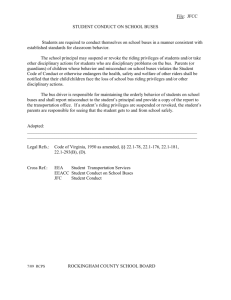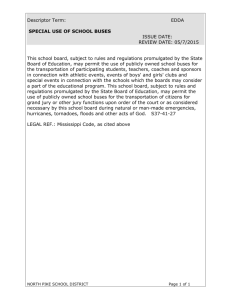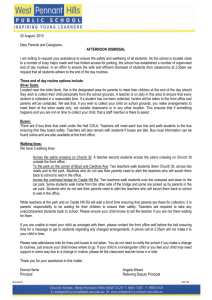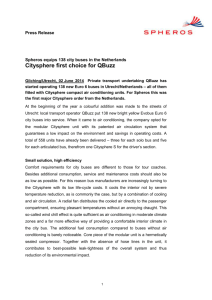SLEEP suggestions for Request for Proposal (RFP)
advertisement
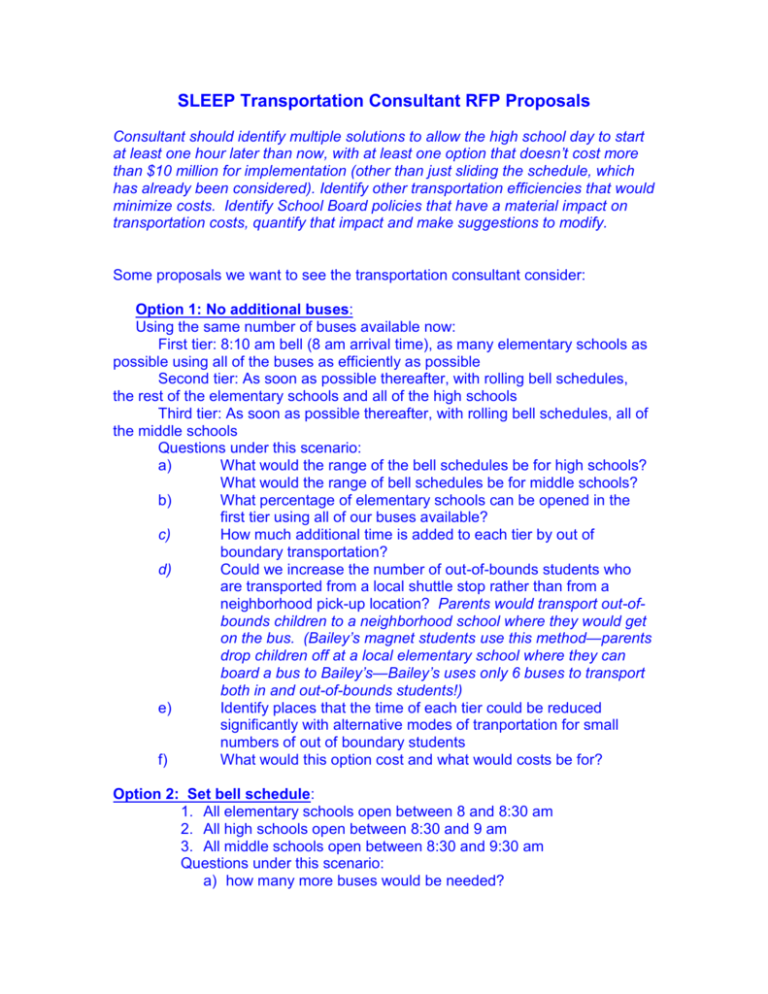
SLEEP Transportation Consultant RFP Proposals Consultant should identify multiple solutions to allow the high school day to start at least one hour later than now, with at least one option that doesn’t cost more than $10 million for implementation (other than just sliding the schedule, which has already been considered). Identify other transportation efficiencies that would minimize costs. Identify School Board policies that have a material impact on transportation costs, quantify that impact and make suggestions to modify. Some proposals we want to see the transportation consultant consider: Option 1: No additional buses: Using the same number of buses available now: First tier: 8:10 am bell (8 am arrival time), as many elementary schools as possible using all of the buses as efficiently as possible Second tier: As soon as possible thereafter, with rolling bell schedules, the rest of the elementary schools and all of the high schools Third tier: As soon as possible thereafter, with rolling bell schedules, all of the middle schools Questions under this scenario: a) What would the range of the bell schedules be for high schools? What would the range of bell schedules be for middle schools? b) What percentage of elementary schools can be opened in the first tier using all of our buses available? c) How much additional time is added to each tier by out of boundary transportation? d) Could we increase the number of out-of-bounds students who are transported from a local shuttle stop rather than from a neighborhood pick-up location? Parents would transport out-ofbounds children to a neighborhood school where they would get on the bus. (Bailey’s magnet students use this method—parents drop children off at a local elementary school where they can board a bus to Bailey’s—Bailey’s uses only 6 buses to transport both in and out-of-bounds students!) e) Identify places that the time of each tier could be reduced significantly with alternative modes of tranportation for small numbers of out of boundary students f) What would this option cost and what would costs be for? Option 2: Set bell schedule: 1. All elementary schools open between 8 and 8:30 am 2. All high schools open between 8:30 and 9 am 3. All middle schools open between 8:30 and 9:30 am Questions under this scenario: a) how many more buses would be needed? b) what would it cost? c) How much travel time is added to each tier to pick up out-ofboundary students and is there any way to reduce it? (refer to Option 1, Question d). How many buses pick up out of boundary students? d) identify ways to significantly lower costs for this option with alternative modes of transportation for out of boundary students Option 3) Identify the lowest-cost, most efficient transportation possible with all bells being between 8 am and 9:30 am. Including, but not limited to the following methods: 1. Mixed bell schedules—high schools could have rolling start times—do not all need to start at the same time. 2. Schools with largest percentage of in-bound students start first; schools with largest percentage of out-of-bound students start next; rolling schedules in up to four tiers. Questions under this scenario: a) What would the bell schedules look like? b) How many more buses would be needed? c) What would be the cost of these options? d) Identify ways to significantly lower these costs without affecting large numbers of students Option 4: Middle School Stays the same: Leaving the middle school start times as is (except for those middle schools that share the high school buses); followed by the high schools; followed by elementary schools on rolling schedules. e) What would the bell schedules look like? f) How many more buses would be needed? g) What would be the cost of these options? h) Identify ways to significantly lower these costs without affecting large numbers of students For each option: 1. how much time and money would be saved if high school students were transported using “express” buses that stop at fewer, centrallylocated, neighborhood stops rather than many neighborhood locations? No student should be more than 1.5 miles from a bus stop. 2. How much time and money would be saved if we change the radius of eligibility for bus transport from the current 1.5 miles for secondary students to 2.0 miles? 3. How much time and money would be saved if we change the radius of eligibility for bus transport from the current 1.5 miles for secondary students to 2.5 miles?




